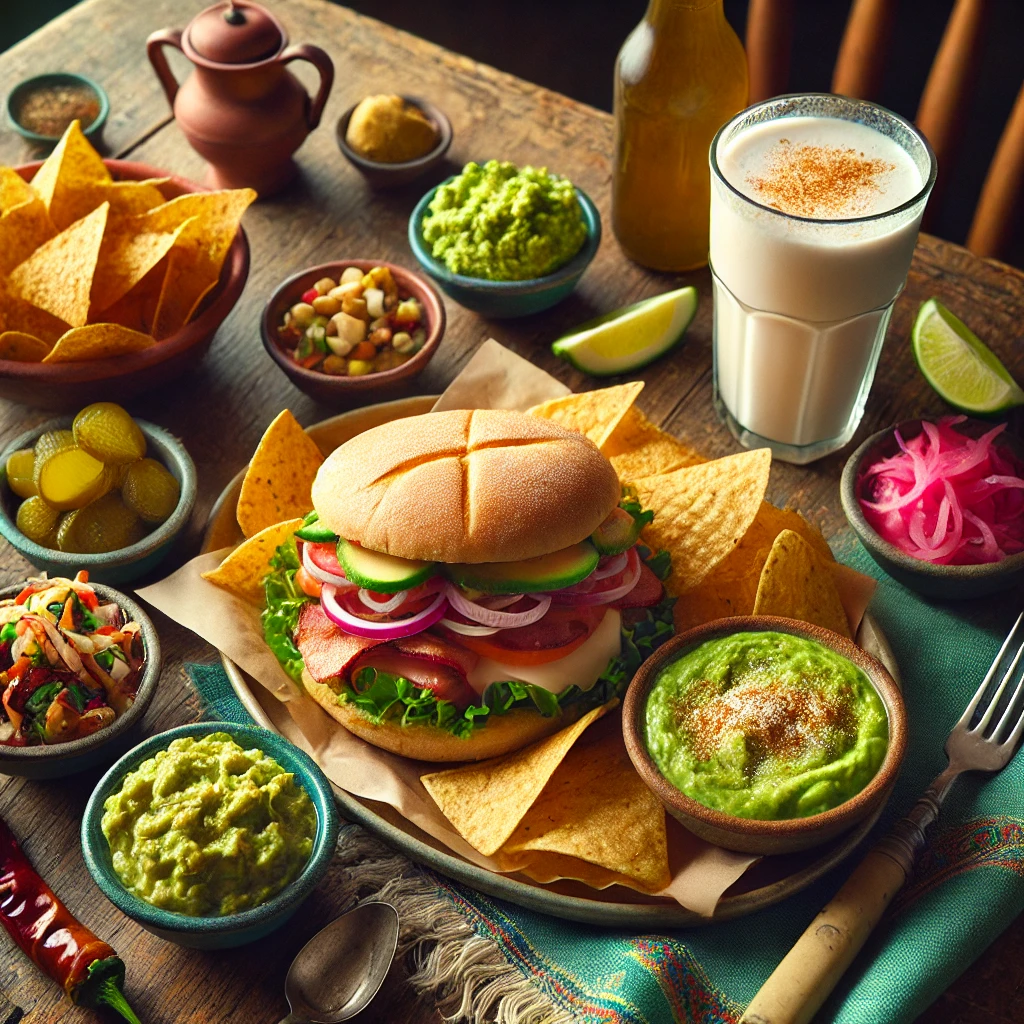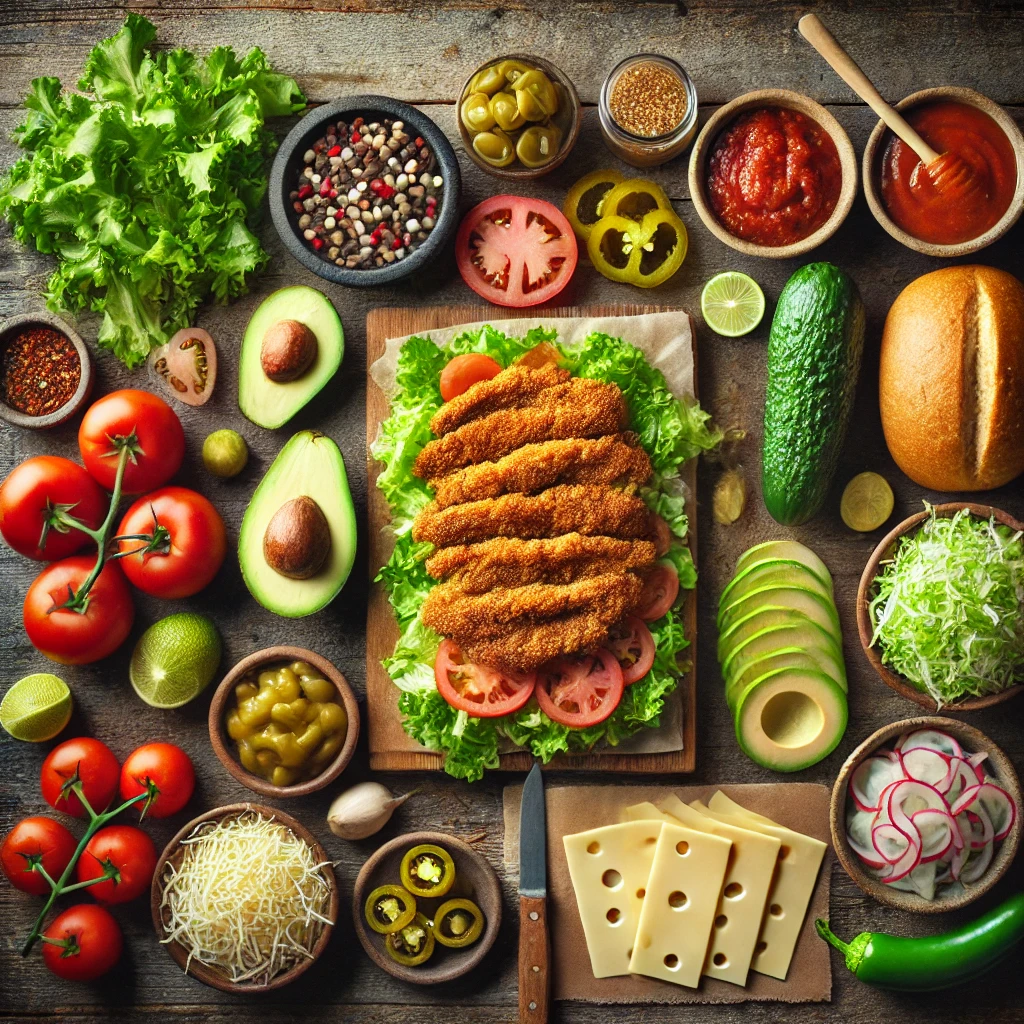What Are Mexican Torta?
An Analytical Journey into Flavor for many, the word “torta” might bring to mind a cake, but in Mexico, a torta is something entirely different—a beloved and popular type of sandwich. Mexican torta are a culinary development rooted in rich history and cultural fusion, influenced by French culinary traditions yet deeply embedded in Mexican flavors. This article provides a comprehensive analysis of torta. exploring their origins, ingredients, and how to make them at home.
Table of Contents

The History of Torta: A Study of Cultural Interactions
The history of the Mexican torta is a fascinating example of cultural interaction and evolution. When French forces occupied Puebla in the 19th century, they introduced their bread-making techniques, particularly the baguette. This influence led to the creation of Mexican rolls like the bolillo and telera, which are now integral to the traditional torta. Over time, the torta has become a staple in Mexican cuisine, embodying a unique blend of global influences and local innovation.
Types of Bread for Torta: A Methodical Approach

Choosing the right bread is critical when making a torta. The selection process should consider texture and flavor to ensure the best result. The most common breads are:
–Bolillo: A small absorbing the bold flavors of the torta’s fillings, creating a perfect balance between texture and taste.
–Telera: A flatter, larger roll with an oblong shape that provides ample space for a variety of fillings, making it a popular choice for more substantial torta.
If traditional Mexican bread is unavailable, suitable alternatives include Portuguese rolls, Kaiser rolls, or even French bread used for po’boys. However, it’s important to avoid overly tough or chewy breads like ciabatta or traditional baguettes, as they may overwhelm the sandwich’s delicate balance of ingredients.
Torta Fillings: A Creative and Versatile Selection

One of the strengths of the torta lies in its versatility and the endless possibilities for fillings. From simple to complex, the choice of fillings allows for a wide range of culinary exploration. Some of the most popular fillings include:
–Milanesa: A breaded and fried steak or chicken cutlet, which serves as a rich base for various toppings and garnishes, providing a satisfying combination of textures and flavors.
–Carne Asada, Carnitas, or Al Pastor**: Traditional taco fillings that translate beautifully into torta, bringing a familiar yet exciting taste to the sandwich.
–Vegetarian Options: Avocado slices, refried beans, and a selection of cheeses like Monterey Jack, Oaxaca, or Gouda offer delicious alternatives for those seeking a meat-free torta.
This wide variety of fillings allows for creativity and customization, enabling cooks to craft tortas that suit different tastes and preferences.
Garnishes and Sauces: The Final Touches
The Mexican culinary ethos often embraces the idea that “more is more,” and this certainly applies to torta garnishes and sauces. The right combination of toppings can enhance the overall flavor and create a more complex and enjoyable eating experience. Consider these options:
– Vegetables: Shredded lettuce, diced tomatoes, and chopped onions add a refreshing crunch, while pickled jalapeños introduce a spicy kick.
–Avocado or Guacamole: Creamy and rich, these are essential additions that balance the spiciness and acidity of other ingredients.
–Salsas and Creams: A drizzle of salsa or Mexican crema can elevate the torta, adding depth and moisture to the sandwich.
For those who enjoy a bit of messiness in their meals, the torta ahogada—a regional specialty from Guadalajara—offers an exciting twist. This version is either dipped in or smothered with a savory red sauce, making it a unique and flavorful option that requires a knife and fork to eat.
How to Make a Torta at Home: A Step-by-Step Guide

Creating a torta at home is a straightforward process that yields delicious results. Here’s a simple method to get you started:
1.Choose Your Bread: Select fresh bolillo or telera rolls, or use a suitable alternative that is crusty yet soft.
2. Prepare Your Fillings: Have your meats, cheeses, and vegetables ready. Ensure that hot fillings are warm but not overly hot to avoid making the bread soggy.
3. Assemble the Torta: Slice the roll lengthwise, as you would a hamburger bun. Spread a layer of refried beans on the bottom half if using. Add the main fillings, then layer on vegetables, cheese, and any other garnishes.
4. Toast or Press: If you prefer a toasted sandwich, use a panini press, sandwich maker, or even a grill to lightly toast the assembled torta. If making a torta ahogada, now is the time to dunk the sandwich in the simmering red sauce.
5. Serve and Enjoy: Tortas are often served cut in half for easier handling. Present with extra garnishes or sauces on the side for additional customization.
Serving Suggestions: Enhancing the Experience

Torta are a perfect example of Mexico’s love for handheld foods, making them ideal for casual meals, picnics, or even as a street food treat. Pairing your torta with sides like chips, pickled vegetables, or a refreshing drink like horchata can enhance the overall dining experience. For a more elaborate presentation, consider serving torta alongside other Mexican dishes such as tacos, nachos, or a hearty bowl of guacamole.
Conclusion: Embrace the Torta Experience
Whether you’re new to Mexican cuisine or an experienced food enthusiast, the torta offers a delicious and versatile meal option. Its rich history, combined with the endless possibilities for fillings and garnishes, makes the torta a must-try culinary experience. With the right approach and a bit of creativity, you can easily bring the authentic flavors of Mexico into your home kitchen. So gather your ingredients, follow these steps, and start crafting your own personalized tortas today.

